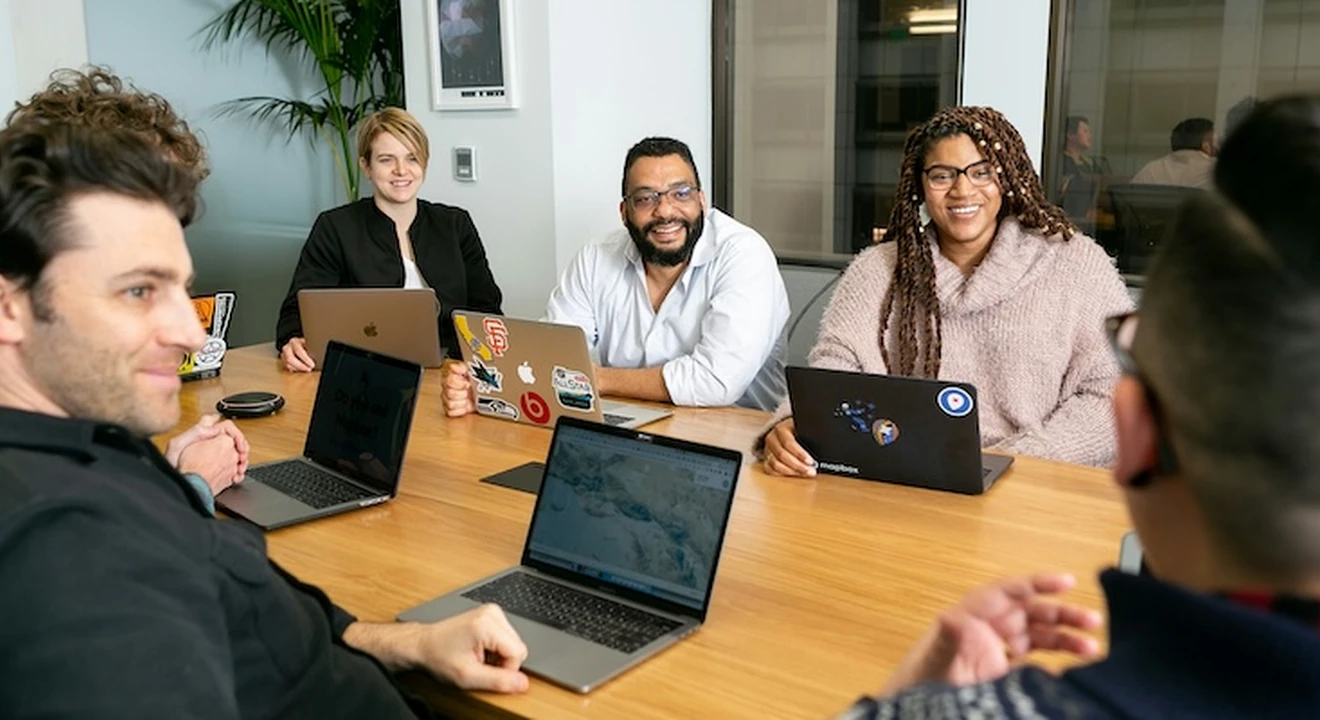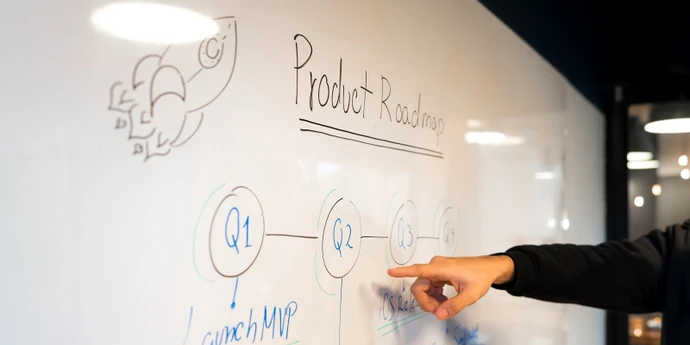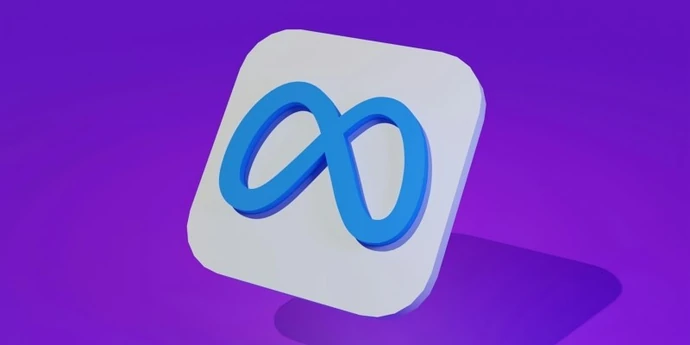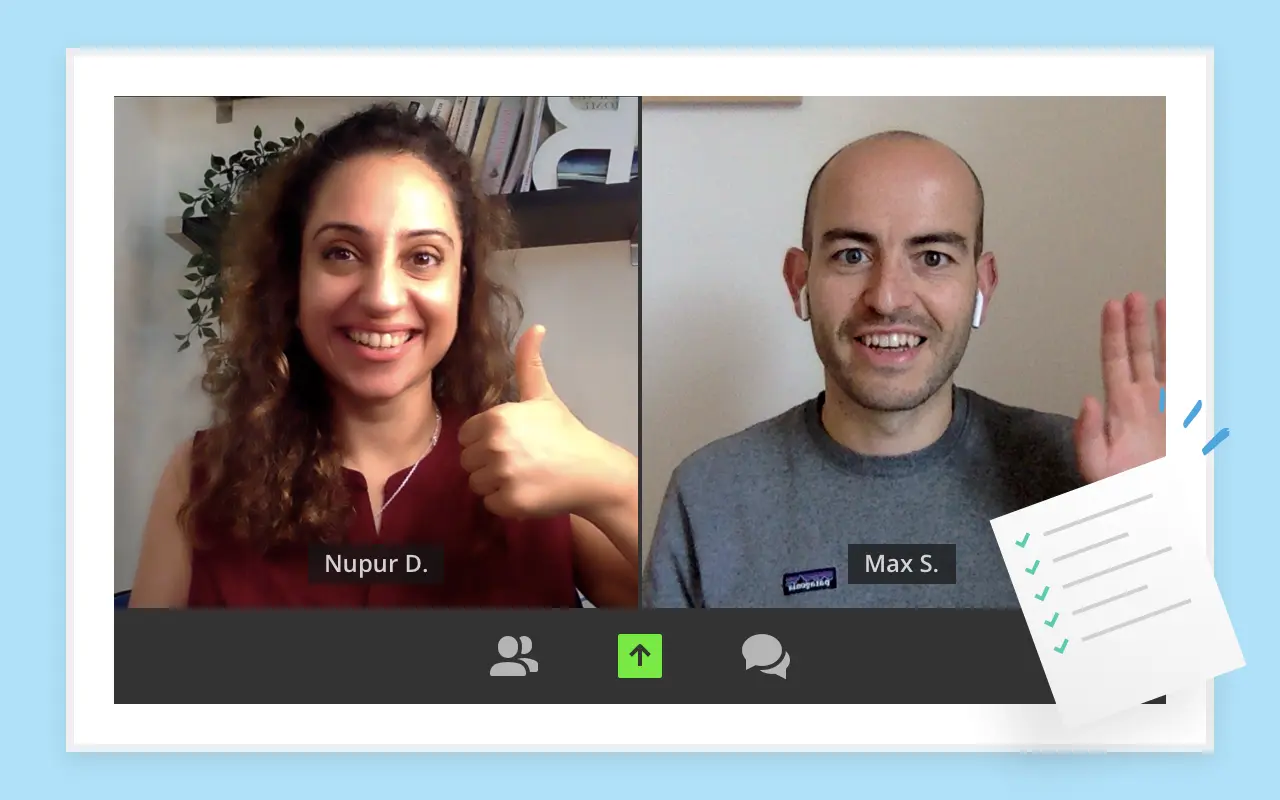BizOps interview prep is a big challenge. There are a variety of question types you'll need to master, and the top companies like Google, DoorDash, and Uber don’t always focus on the same ones.
So, what do you do? And where do you start?
That’s where we come in. From analyzing 200+ Business Strategy and Operations interview questions reported by real candidates on Glassdoor, we’ve learned how the interview process works at the top companies.
Below, we've mapped out the five high-level steps you'll want to take to prepare for your BizOps interviews. Along the way, we've provided links to other resources that will allow you to do a deep dive into the topics where you need the most help:
- Understand the BizOps role
- Learn more about the BizOps interview process and timeline
- Know the question types
- Follow interview tips from our expert strategy and operations coach
- Do mock interviews
Ready? Let’s go!
Click here to practice 1-on-1 with ex-BizOps interviewers
1. Understand the BizOps role↑
Before we dive into the interview process, it’s important to understand that BizOps roles can vary widely depending on the company.
While they all fall under the umbrella of “Business Operations and Strategy,” different teams have different focuses. Below are some of the most common BizOps functions you'll see at major tech companies:
- Product BizOps (Product Operations)
- GTM BizOps (Go-To-Market Operations)
- Sales BizOps (Sales Operations)
- Strategy and Insights BizOps
- Customer Success BizOps
- Finance BizOps
- Data and Analytics BizOps
Regardless of the title, most roles involve solving high-impact problems and driving operational improvements across the company. People in these positions use data to investigate issues, develop solutions, and work cross-functionally to put those solutions into action.
Jackie Han, a Bain manager and interviewer, outlines the core responsibilities of a BizOps role as follows:
- Aligning day-to-day operations with the company’s overall strategy and goals through data, structured thinking, and collaboration
- Supporting strategic planning and helping teams improve how they operate
- Acting as a thought partner to leadership on key business decisions
2. Learn the BizOps interview process and timeline↑
In this section, we'll walk you through a general overview of the typical stages you'll face during the interview process for the strategy and operations role. If you're interviewing specifically for the Google Strategy and Operations role, we also have a dedicated guide for that.
So, what’s the general interview timeline for the BizOps role? It normally takes between four to eight weeks and follows these steps:
- Resume screening
- Recruiter screening (~30 min)
- Hiring manager screening (45-60 min)
- Onsite interviews (3-6 interviews, 30-60 min each)
2.1 Resume screening
First, recruiters will look at your resume and assess if your experience matches the open position. This is the most competitive step in the process—we’ve found that ~90% of candidates don’t make it past this stage. So, to get an interview, you'll need your resume to really stand out.
Use our free, comprehensive guide on how to write a consulting resume (with five examples from successful applicants). While it’s designed with consulting candidates in mind, much of the advice is still relevant for the BizOps role. You’ll find plenty of useful tips on formatting, structure, and how to present your experience.
To go one step further and really increase your chances, get expert feedback on your resume. Click here for a resume review with a former BizOps interviewer or recruiter. They will cover what achievements to focus on (or ignore), how to fine-tune your bullet points for the strategy and operations role, and more.
2.2 Recruiter screening
After you’ve applied, or if a recruiter has reached out to you on LinkedIn, your next step will often be a 30-minute phone call with a recruiter.
This call is meant to confirm that you're a potential fit for the role. You should be prepared for behavioral and resume questions like “Why BizOps?”, "Tell me about yourself", "Why this company?", etc.
2.3 Hiring Manager screening
Once you’ve cleared the initial recruiter call, you may be endorsed to a hiring manager for a follow-up conversation. This usually lasts 45 to 60 minutes and includes a mix of behavioral rounds, case interviews, and more role-specific questions.
Case interviews are based on hypothetical business scenarios, where you're asked to explain how you’d solve a problem and recommend a solution. Jackie shared a few examples of the kinds of questions you might encounter:
- Your company is evaluating a new market for expansion – what’s your approach?
- Your sales team is underperforming – how would you diagnose and improve it?
Of course, actual case questions are usually more specific to the company and its business model. More on that in section 3.
In addition to case interviews, some companies, like DoorDash, give take-home assignments, though this isn’t very common.
If you move past this stage, the recruiter will reach out to schedule your interview loop and likely share BizOps interview prep materials for the next rounds. They should also let you know what type of interviews to expect so that you can prepare properly.
2.4 Onsite interviews
If you pass the initial interviews, you'll be invited onsite or to a virtual "loop" for three or six interviews, each lasting 30 to 60 minutes. These final interviews are the biggest test for BizOps candidates.
You'll mostly be interviewed by current strategy and operations managers. But, depending on the company, role, and circumstances, you may also have interviews with an HR rep, a senior executive, or, in Google’s case, an engineer who will assess your technical skills and ability to communicate with developers.
The rounds will vary depending on the company, but will likely consist of:
- Behavioral questions
- Case studies
- Business acumen
- Product sense
- Data and analytics
- Technical questions
Right, ready to get into the interview questions?
3. Know the question types↑
We analyzed the questions asked in strategy and operations interviews using data from Glassdoor and organized these questions into the six buckets listed above.
In the following section, you’ll find example questions you can practice with, along with a sample solution for one of the case interview questions to help guide your answer.
3.1 Behavioral questions
A huge chunk of the BizOps interviews are behavioral questions. These are designed to understand how you’ve handled situations in the past, under the assumption that past behavior is a good predictor of how you’ll perform in the future.
Here we’ve divided the questions into four sub-categories:
- Culture fit questions. Top companies want to know if your values and working style align with theirs. You’ll likely get questions about your motivation for the role and how you’d contribute to the company’s culture.
- People management. These questions explore how you lead, support, and develop others, whether through formal management or informal leadership. You can expect questions about giving feedback, resolving conflicts, and helping others perform at their best.
- Project execution. BizOps roles often involve driving initiatives from start to finish. These questions test your ability to manage timelines, prioritize tasks, deal with ambiguity, and deliver results under pressure.
- Stakeholder management. Since BizOps teams work across multiple functions, interviewers will assess how well you communicate and build trust with different stakeholders. You may be asked how you influence decisions, balance competing interests, or align teams toward a shared goal.
Practice using the questions below.
Example behavioral BizOps interview questions
Culture fit
- Tell me about yourself
- Tell me your biggest accomplishments
- Tell me about a time you received feedback that you didn’t agree with. How did you handle it?
- Why [X]? / Why this role? / Why do you want to work at [X]?
- Why would you be a good fit for this position?
- Why did you leave your previous company?
- How do you handle stress?
- How do you handle feedback?
- What was your greatest accomplishment and biggest failure?
- What is your favorite app?
People management
- Tell me about a time you faced a personal conflict with someone at work. How did you handle it?
- Tell me about a time you've motivated someone on a project.
- Do you have experience hiring people?
- If you could build a team of four people, who would you choose in terms of personalities/skills? (engineer, designer, business person, etc.)
Project execution
- Tell me about a project you have worked on
- Tell me about a time you used 20% effort to achieve 80% impact
- Tell me about a time you demonstrated abilities to create strategies and implement them in execution
Stakeholder management
- Tell me about a time you worked collaboratively to solve a problem or deliver a project
- Tell me about a time you worked with a Sales team
- Can you share how you typically work with teams from other functions?
- How can you convince senior stakeholders or get buy-in for your ideas?
- Describe a time you faced a challenge while working cross-functionally across multiple teams. How did you handle it?
When you’re preparing for this part of the interview, we recommend consulting our guide on how to answer behavioral questions, which includes tips on structuring your answers using the STAR method.
Then, dive into our leadership, people management, and program/project management primers for more targeted preparation.
3.2 Business questions
In addition to behavioral questions, most BizOps interviews include business questions. This shouldn’t come as a surprise, after all, “business” is half the job title.
You can expect hypothetical scenarios or open-ended prompts and be asked to walk through your thought process. They’ll broadly fit into these three sub-categories:
- Business strategy. You'll be asked to think through big-picture decisions that influence the company's direction and growth. You might be asked to evaluate a new market, propose a strategy, or weigh in on company decisions.
- Business sense. These questions check your understanding of what makes a business work. You may be asked about costs, revenue levers, or how to evaluate the health of a business.
- Market sizing. You’ll be asked to estimate the total potential revenue or volume of a specific market. These don’t always require exact numbers, but they do require clear thinking and assumptions.
Let’s take a look at some example questions.
Example business-focused BizOps interview questions
Business strategy
- Have you demonstrated the ability to create strategies and implement them in execution?
- Would you invest in X company, and why or why not?
- What framework would you use to evaluate a category that's suitable to launch into?
- What are the three biggest challenges facing the company?
- What is the next big thing for Google in the region? How do you know?
- Should LinkedIn launch a standalone messaging app like Facebook Messenger?
- If you were given $25K, how would you grow customers?
- Are you familiar with the concept of Value Proposition Design and how it can be used to improve a company’s strategic position?
- Tell us about the strategies you’d suggest for a food delivery app.
Business sense
- What factors go into profitability? (costs vs. revenue)
- What are the potential costs a company should consider before launching a product?
Market sizing
- What is the size of the app promo market in SEA?
- How would you size the market for YouTube?
To learn how to answer market sizing questions, refer to our market sizing interview guide. Then, check out our explanations of how to answer common business questions.
3.3 Case questions
Case interviews consist of candidates being assigned test cases. These cases are designed to mimic the kinds of scenarios you will work with on a daily basis in strategy and operations roles, and they are often pulled directly from real-life experiences.
The case typically consists of a single problem or situation faced by the company you’re interviewing for, with its own set of desired outcomes, opportunities, obstacles, and risks. Candidates are given a set of data and a certain amount of time to analyze the case, design a solution, and present that solution.
Now, let’s get into the complete list of BizOps case interview questions reported by candidates across different companies.
Then, we’ll walk you step-by-step through a sample framework and show how to apply it using a real case from Glassdoor.
Case interview questions asked in BizOps interviews
- Your company is evaluating a new market for expansion. What’s your approach?
- Your sales team is underperforming. How would you diagnose and improve it?
- If LinkedIn Learning wants a partnership with the UC system, what are the benefits to LinkedIn? Where might revenue come from?
- You’re given a file with 25,000 rows of raw data. Using our Open API error codes, evaluate the trends causing order errors and suggest possible solutions for the vendor.
- We’re thinking of expanding to a new market. How would you determine the growth opportunity if there’s no transactional data available?
- Consider the impacts of the three-sided marketplace when one user group grows
- How would you improve the CSAT score of an airport?
- Estimate the revenue from student licensing. There are 9 schools with a combined student population of 20,000. About 60% of these students are expected to use the licenses. LinkedIn sells licenses in bundles of 10,000 for $250,000. After graduation, 20% of students are expected to retain their licenses and continue paying individually. Production and engineering costs are estimated at 30% of total revenue. However, there’s a 15% cannibalization rate, meaning some students already have licenses. The lifetime value of a Lynda license is $75.
- Calculate profitability. The total revenue from UC partnerships is estimated at $2,750,000, with an additional $1,650,000 expected from students who retain their licenses after graduation. Production and engineering costs are $825,000, and cannibalization accounts for $1,237,500. After accounting for costs, estimated profitability is $2,337,500. Based on this analysis, what would you recommend?
For more practice cases, see our guide on operations case interviews, which includes sample cases from top consulting firms.
3.3.1 Answer framework for case questions
We’ll be using a repeatable, structured approach to walk through the case. This is the same flexible framework we cover in our full case interview prep guide for MBB, and it’s one you can apply to almost any BizOps-style case question:
BizOps case interview answer framework
Step 1: Ask clarifying questions
Start by writing down all the key points of the problem, and once you've got it down, summarize the problem back to the interviewer to make sure you’ve understood it correctly.
Then, ask a few clarifying questions to define the scope and goals of the case. This helps align your answer with what the interviewer is looking for.
Step 2: Create a case framework
At this point, you’ll want to organize your thoughts using a framework. The kind of framework you create will depend on the type of case problem you're given.
There are many frameworks you can use as a base, but for this particular question, we’ll go with the market entry framework, which is often used to evaluate new business ideas.
For more context, you can learn more about the top 7 case interview frameworks in our full guide.
A quick note: Pre-made frameworks can be helpful as a starting point, but don’t copy them word-for-word. Interviewers can easily tell when an answer is memorized. They’re looking for clear thinking and good judgment, not a generic structure.
Once you’ve mapped out your framework, walk them through your logic step by step.
Step 3: Explore your framework
Once you’ve laid out your framework to the interviewer, start working through it. The best way to do this is usually by making a hypothesis.
State a hypothesis that seems most likely, given the information available, and test it as you go. Think aloud as you start exploring this hypothesis.
Ask the interviewer questions to explore whether your hypothesis is valid. If you conclude that your hypothesis is false, eliminate that branch and go to the next one.
Step 4: Do the maths
You’ll likely be asked to estimate market size or revenue potential. State your assumptions clearly and walk the interviewer through your calculations.
Calculators are not allowed in case interviews, so it’s crucial to practice doing mental maths quickly and accurately before attending a case interview. We cover useful techniques in our free guide to Case interview maths.
After doing the math, interpret your results and explain what they mean for the business.
Step 5: Brainstorm solutions
Now that you’ve explored the key parts of your framework and run the numbers, it's time to brainstorm potential solutions, problems, or causes. In this part, you can use a very basic mini-framework.
The goal is to show your ability to generate new ideas and solutions in a pressured environment, but you need to do this in a structured way, rather than just throwing some ideas around.
Step 6: Make a recommendation
Finally, wrap up with a structured recommendation. Summarize your findings and explain what the client should do. Give your recommendation first, then provide 3 - 5 supporting arguments, and outline next steps and potential risks.
Now, let’s put that framework into practice.
Below is a real case question from Glassdoor, along with follow-up questions that the interviewer asked during the actual interview. We'll walk through it step by step using the case interview framework outlined above.
3.3.2 Example case interview answer walkthrough: LinkedIn Freelance Marketplace
Case question: LinkedIn is evaluating a new business opportunity to incorporate a freelance marketplace platform into its existing business. Walk me through your thought process on whether LinkedIn should pursue this business opportunity and what factors LinkedIn should consider?
Step 1: Ask clarifying questions
Candidate: Let me first make sure I’ve understood the prompt correctly.
LinkedIn is considering launching a freelance marketplace platform, and I’ve been asked to evaluate whether it’s a good opportunity to pursue. I’ll walk you through how I’d approach this decision and what factors I’d consider along the way. Does that sound right?
[Pause for confirmation from interviewer]
Candidate: To help narrow down the scope, I’d like to ask a few clarifying questions before we move forward:
What is LinkedIn’s primary goal for exploring this opportunity? (e.g., Is it to unlock a new revenue stream, increase user engagement, or compete with platforms like Upwork and Fiverr?)
Interviewer: The main goal is to diversify revenue beyond ads and subscriptions by tapping into the growing freelance economy.
Candidate: Got it. Is there a specific geographic market we should focus on first?
Interviewer: Yes, let’s focus on the U.S. market initially.
Candidate: And should we assume this is being built into LinkedIn’s existing platform or treated as a separate product?
Interviewer: We’ll leave that up to you to decide based on what you think makes most strategic sense.
Candidate: Thanks, that gives me a much clearer picture. Based on that, I’ll move on to structuring my approach.
Step 2: Create a case framework
Candidate: Great, so to break this down, I’d like to organize my thoughts around four main areas that I think will help us assess whether this opportunity makes sense for LinkedIn:
- Market: First, I’d want to understand the freelance space. How big is the market? How fast is it growing? Who are the main players?
- LinkedIn’s capabilities: Then, I’d look at whether LinkedIn has the right assets – like its user base, brand, or tech stack – to compete in this space.
- Financials: Next, I’d assess whether this makes financial sense. That includes upfront investment, expected revenue, and payback period.
- Go-to-market approach: Finally, I’d think about execution. Should this be built into the core LinkedIn product or launched as a standalone platform?
That’s the structure I’ll use to explore the case. I’ll start with the market to get a sense of the opportunity size and how crowded the space is. Let me know if that sounds good or if you'd like me to adjust anything.
Step 3: Explore your framework
Candidate: Let’s start by digging into the market itself. I’d want to understand how large the freelance economy is today and where it’s headed. For example, what’s the total addressable market (TAM) in terms of freelance spend, and how fast is it growing year over year?
I’d also want to segment the market – are we talking about high-skill professionals (like developers and designers), or lower-skill gig workers?
Since LinkedIn is strongest among professionals, I’d focus on high-skill freelance categories like design, software, and marketing, which are more aligned with LinkedIn’s user base.
This will shape how we size the opportunity and who we’re competing with.
Interviewer: Can you further elaborate on your framework?
Candidate: Sure. I’d break this down into three buckets: size and growth, customer segments, and competitive landscape.
For sizing, I’d start with the total freelance economy in the U.S., then estimate the share attributable to high-skill segments.
Next, I’d identify the main customer personas—freelancers looking for work and companies seeking contract talent.
Finally, I’d map out the current players like Upwork, Fiverr, and Toptal. I’d look at their positioning, pricing, and any gaps LinkedIn might be able to fill, especially areas where LinkedIn’s brand and network give it an edge.
Then, you can move on to LinkedIn’s capabilities:
Candidate: Now moving into LinkedIn’s internal capabilities, I’d assess whether the company has the right assets to win in this space. LinkedIn already has a strong brand in the professional space, millions of active users, and trust mechanisms like endorsements and reviews.
That said, offering freelance services requires more than just discovery. I’d look into whether LinkedIn’s infrastructure can support key features like transaction processing, conflict resolution, and project milestones. If not, those would need to be built or integrated.
Then, zoom in on the financials:
Candidate: Next, I’d look at both costs and revenue potential. What would it take to build and maintain the platform? Would it require a separate ops team, customer service, or fraud prevention tools?
On the revenue side, how might we monetize? Transaction fees, premium freelancer subscriptions, or enterprise client tools could all be viable.
Interviewer: Could you discuss the profitability aspect further? What are the key drivers for cost and revenue?
Candidate: On the revenue side, I’d expect monetization to come from transaction fees, premium listings, or value-added services like escrow or freelancer verification. For example, if LinkedIn takes a 10% cut on each transaction, and the average project value is $1,000, you can start estimating revenue based on user adoption.
For costs, the biggest drivers would likely be platform development, trust & safety (e.g., dispute resolution), and customer support.
Interviewer: Should this be implemented on the existing platform or launched as a new business line?
Candidate: I’d look at both angles. Embedding it into the existing LinkedIn platform could drive adoption faster, since you’re meeting users where they already are.
But launching a standalone brand might give the team more flexibility in design and positioning, especially if they want to target segments that don’t currently use LinkedIn.
I’d start by embedding it into the existing platform to take advantage of LinkedIn’s active user base and trust mechanisms. If we see limited adoption or engagement, we could then explore spinning it off as a standalone brand.
Step 4: Do the maths
At this point, you may be asked to estimate the market size or revenue potential. You can begin with:
Candidate: Let’s try to estimate the potential revenue opportunity. To do that, I’ll make a few assumptions we can later validate or refine.
Then, walk through your thinking in clear, simple terms:
Candidate: Let’s say we focus on the U.S. to start. According to recent data, the U.S. freelance economy generates around $1.3 trillion annually. If we assume LinkedIn targets high-skill segments – like software, marketing, and design – that might represent about 25% of the total market, or ~$325 B.
Let’s also assume that LinkedIn could reasonably capture 1% of that segment in the first few years, which would be about $3.25B in transaction volume. If we apply a 10% take rate, similar to Fiverr or Upwork, that’s roughly $325M in annual revenue potential.
You can also acknowledge that these are just directional numbers:
Candidate: Of course, these are high-level estimates, and we’d want to test these assumptions with real data – user behavior, industry reports, and pilot results – to get more accurate projections.
Interviewer: What data or information do you need to calculate the market size, with respect to potential revenue generation?
Candidate: I’d want to gather:
- Total freelance spend in our chosen market
- Percentage of that spend coming from high-skill services
- LinkedIn’s potential user conversion rate (e.g., profile views → transactions)
- Average project value
- Benchmark take rates from competitors like Fiverr or Upwork.
Interviewer: How would you verify certain assumptions used to calculate the market size?
Candidate: I’d cross-check industry reports, analyst insights, and public financials from Fiverr and Upwork. We could also run surveys or pilot tests on LinkedIn to see how many users express interest in freelance work.
Additionally, we could test pricing and conversion assumptions through a small MVP rollout or targeted experiments on the platform.
Step 5: Brainstorm solutions
Now that we’ve sized the opportunity and evaluated LinkedIn’s position, it’s time to brainstorm what actions they could take to bring this idea to life. You might say:
Candidate: Let me now think through a few potential strategies LinkedIn could pursue if they decide to move forward with this opportunity. I’ll break this down into two areas: product and growth.
Then, you can walk through the following points:
Product strategy
- Build trust by integrating LinkedIn’s existing identity and endorsement systems to vet freelancers more effectively than competitors.
- Add features that streamline project management – like milestone tracking, messaging, or scheduling – so that users don’t have to rely on external tools.
- Implement a secure review and dispute system to maintain quality and reduce friction between freelancers and clients.
Growth strategy
- Start with a focused launch in one vertical (e.g., design or marketing) where LinkedIn already has strong user engagement, then expand based on traction.
- Promote the marketplace through native LinkedIn surfaces – like feed placements, job postings, or InMail nudges.
- Offer early user incentives, such as waived service fees for the first few months or bonus visibility for freelancers who complete their first few gigs.
To close this step, you can say:
Candidate: Each of these ideas would need to be tested through a phased rollout, ideally starting with a lean MVP targeting a specific user segment. That would help us validate product-market fit before scaling further.
Step 6: Make a recommendation
To wrap things up, you’ll want to start with a recommendation based on everything you’ve analyzed so far. You might say:
Candidate: Based on what we’ve discussed, I would recommend that LinkedIn explore launching a freelance marketplace, starting with a limited MVP focused on high-skill, in-demand categories like design, software, or marketing.
Then, walk through your reasoning using three to five supporting arguments, such as:
- The market is large and growing, especially in high-skill segments. Demand for flexible, project-based work continues to rise across industries.
- LinkedIn is well-positioned to compete thanks to its strong brand, built-in network of professionals, and existing tools like messaging, profiles, and recruiter filters.
- Monetization looks promising, with potential revenue from take rates, subscriptions, and value-added features like escrow, verification, or talent matching.
- Launching an MVP reduces risk, allowing LinkedIn to test adoption and user behavior before investing in a full-scale rollout.
- Early integration into the core platform could drive fast adoption, while still leaving the door open for a separate product later if needed.
Next, outline practical next steps and address key risks:
Candidate: That said, there are execution risks and strong competitors in this space, as well as risks from AI’s impact on the job market. To manage those, I’d recommend:
- Starting with one vertical to validate demand and gather usage data
- Testing pricing models and product flows through small-scale experiments
- Building strong trust & safety features from the outset, including reviews, payment protection, and moderation
Finally, if the interviewer asks for an elevator pitch, you can say:
Candidate: LinkedIn is uniquely positioned to enter the freelance space. With its trusted network, built-in discovery tools, and strong user base, it can offer a more seamless experience for both freelancers and clients.
A targeted MVP would allow LinkedIn to test this opportunity with minimal risk, while laying the groundwork for a scalable, high-growth business line.
Again, we can’t stress enough that this is just one example of a framework. You should ALWAYS customize yours based on the specific case prompt, company, and role you’re interviewing for.
For more practice, click here to book one-on-one mock case interview sessions with ex-interviewers.
3.4 Data and analytics questions
BizOps roles often help diagnose problems, spot opportunities, and recommend actions, and ideally, all of that should be grounded in data.
Data and analytics questions are meant to test how you work with data to support decision-making. You might be asked to investigate trends, define KPIs, or evaluate the success of a project using metrics.
As you’ll see in our examples later, one common type is the metric change question. Some companies use these to see whether candidates know what to do when a key metric (e.g., traffic, revenue, engagement) is moving up or down for an unknown reason.
Now, let’s look at some examples of these types of questions:
Example data and analytics questions asked in BizOps interviews
- Tell me about a time you used data
- Metric X moved up/down. How would you investigate?
- Orders have been declining over the past three months. How would you go about finding a root cause? (metric change)
- How would you go about sorting which countries sold the most of good X in year Y?
- How would you go about defining KPIs to track operational efficiency for our Talent Solutions?
- How do business intuition and data gathering work together in a business setting?
- How long would you collect test data? What would the experimental conditions be? What methods would you use?
- How do you work with data, including errors or inconsistencies?
- If you're in charge of missing and inaccurate food deliveries, what are some of the metrics you'd look at to identify why things went wrong? (metric change)
You can check out our full guide on product metric interview questions, which applies quite well to BizOps interviews.
3.5 Product questions
Some candidates report getting product-related questions during BizOps interviews. Based on our analysis of Glassdoor reports, these are especially common in companies like Uber and DoorDash.
Product-focused interviews are designed to evaluate how you work to understand common product challenges and how you identify the best way to approach them. These questions may also test how well you understand product strategy and how it connects to broader business goals.
Here are a few examples that have come up in past BizOps interviews:
Example product questions asked in BizOps interviews
- When did you launch a product, and how did it go? (Uber)
- Which Google product would you improve and how? (DoorDash)
- How would you think about improving a metric for a LinkedIn product? (DoorDash)
- Please outline the strategy for a product launch. (DoorDash)
To help you dig deeper, check out our guide on how to answer product strategy interview questions, which includes sample questions from Google, Meta, LinkedIn, etc.
Let's move on to the final question type.
3.6 Technical questions
Technical questions are rare in BizOps interviews, but they do come up from time to time, especially at more tech-forward companies like Google.
These questions test whether you have a basic understanding of technical concepts or tools that might be relevant to the role. Remember, BizOps often sits at the intersection of multiple teams. You’ll often work with engineers, analysts, or product managers.
So, while you don’t need to be an engineer, you should still be able to demonstrate tech fluency when it counts and effectively communicate with both technical and non-technical stakeholders.
Below are some technical questions asked at BizOps interviews, including one from Google.
Example technical questions asked in BizOps interviews
- What wireless speed is faster: 802.11a or 802.11n?
- Please provide your experience with some ATS and HRM tools.
- How would you explain Open Banking to your grandmother? (Google)
If you’re looking to brush up on foundational technical topics, our Technical Product Manager Interview Questions guide includes useful explanations and examples that apply here, too.
4. Follow interview tips from our expert strategy and operations coach↑
Now that you know what questions to expect, let's focus on preparation.
Below, you’ll find links to free resources and nine introductory steps to help you prepare for your BizOps interviews. We’ve also included tips from Jackie Han, a Manager at Bain & Company with 10+ years of experience in strategy and operations.
Jackie has interviewed many candidates during her time at Bain and knows exactly what top firms look for in a strong BizOps hire.
Let’s get into it!
4.1 Deep dive into the product/organization
As you've probably figured out from the example questions listed above, it's important to be familiar with the company's products and its organization. You'll therefore need to do some homework before your interviews.
"Make sure you really understand the company's business model, value creation opportunities, and risk areas," Jackie, Bain Manager and Interviewer
4.2 Be intentional
Every question you will be asked in a BizOps interview will be open-ended. That means there are no right or wrong answers, and you have to choose what area within the large possible space of responses to focus on.
What matters more is how you structure your response and the choices you make. Jackie explains that “it’s more about the thought process than the right answer,” so be sure to make your assumptions clear.
4.3 Show that you have a growth mindset
Since strategy and operations often evolve, you should be able to adapt quickly and maintain a learning mindset, especially when plans shift or don’t go as expected. As Jackie says, strong candidates are “adaptable to new information, new questions, etc.”
Interviewers are on the lookout to see if you have a growth mindset, which will help you adapt and learn in new situations, versus someone who is stuck in their ways.
4.4 Show humility
Humility is an important trait in BizOps roles, and you should make sure to convey that you have it. You can do this in various ways; for example, by being open about failures when you're answering leadership/behavioral questions, or reacting positively to hints from the interviewer about the limitations of your approach in a case interview.
Overlooking key stakeholders is a common mistake candidates make in BizOps interviews, according to Jackie. "Always think through all the parties involved, what they really care about, and how you'd work with them.”
This is especially important in BizOps, where strategy and operations often shift and evolve alongside business needs.
4.5 Learn how to answer “Story” questions
Stories are powerful and revealing. This is why they are an interview staple. You are likely to get several questions of this type. Interviewers are looking for your “interesting” experiences - these are often cross-functional, messy (involving subjectivity), time-consuming, with imperfect (but improved) outcomes.
Example "story" questions:
- “Tell me about a mistake you’ve made.”
- “Can you describe the last time you demonstrated leadership, even if you weren't in a formal leadership position?”
- “Give me an example of a time you led a team through a difficult situation.”
4.6 Practice data-driven decision-making
Be prepared to answer questions that require data interpretation and making data-driven decisions. Familiarize yourself with basic metrics for product success and have a few methodologies in mind for tackling growth, engagement, and scalability issues.
4.7 Balance strategy with execution
Some candidates focus too much on high-level strategy without considering how their ideas would actually work in practice. Jackie explains that candidates often make the mistake of not applying a practical lens in their answers.
But in BizOps, your ideas need to work in practice, not just on paper.
“You should balance the big picture strategy with practical execution, and think through how you might make a recommendation come to life.”
4.8 Learn a consistent method for answering strategy and operations interview questions
As mentioned previously, BizOps questions fall into certain categories, such as behavioral, business, case, data and analytics, product, and technical questions.
Approaching each question with a predefined method will enable you to build strong interview habits. Jackie explains that candidates should aim to be really structured in their thinking while trusting their business instincts.
“You'll often get ambiguous problems, but show that even those you can break down logically,” she says.
Once you have a working solution, do a quick gut check – does it feel realistic? Does it align well with how businesses actually operate?
So, when it comes time for your interviews, these habits will reduce your stress and help you to make a great impression.
If you’re just looking for a jumping-off point, you can start learning about the different question types you’ll need to master in the following blog articles:
- Market sizing: the ultimate guide
- Case interview prep guide
- How to crack product metric interview questions
- How to answer product strategy interview questions
- Technical product manager interview questions
Once you’re in command of the subject matter, you’ll want to practice answering questions. But by yourself, you can’t simulate thinking on your feet or the pressure of performing in front of a stranger. Plus, there are no unexpected follow-up questions and no feedback.
That’s why many candidates try to practice with friends or peers.
5. Practice mock interviews↑
5.1 Practice with peers
If you have friends or peers who can do mock interviews with you, that's an option worth trying. It’s free, but be warned, you may come up against the following problems:
- It’s hard to know if the feedback you get is accurate
- They’re unlikely to have insider knowledge of interviews at your target company
- On peer platforms, people often waste your time by not showing up
For those reasons, many candidates skip peer mock interviews and go straight to mock interviews with an expert.
5.2 Practice with ex-interviewers
In our experience, practicing real interviews with experts who can give you company-specific feedback makes a huge difference.
Find a strategy and operations coach so you can:
- Test yourself under real interview conditions
- Get accurate feedback from a real expert
- Build your confidence
- Get company-specific insights
- Learn how to tell the right stories, better.
- Save time by focusing your preparation
Landing a job at a big tech company often results in a $50,000 per year or more increase in total compensation. In our experience, three or four coaching sessions worth ~$500 make a significant difference in your ability to land the job. That’s an ROI of 100x!
Click here to book BizOps mock interviews with experienced interviewers.















